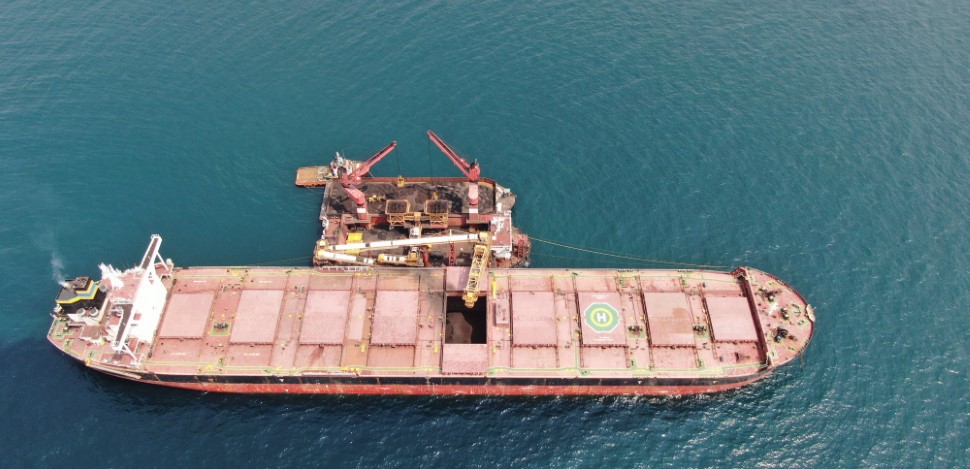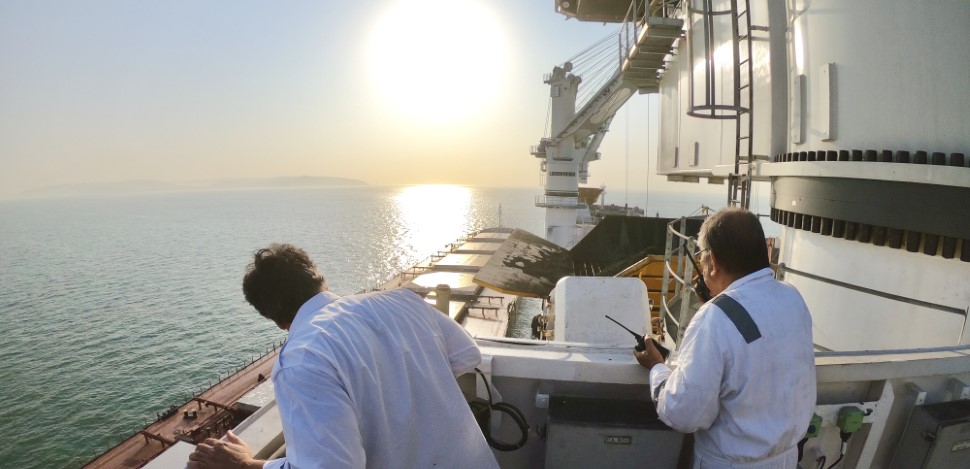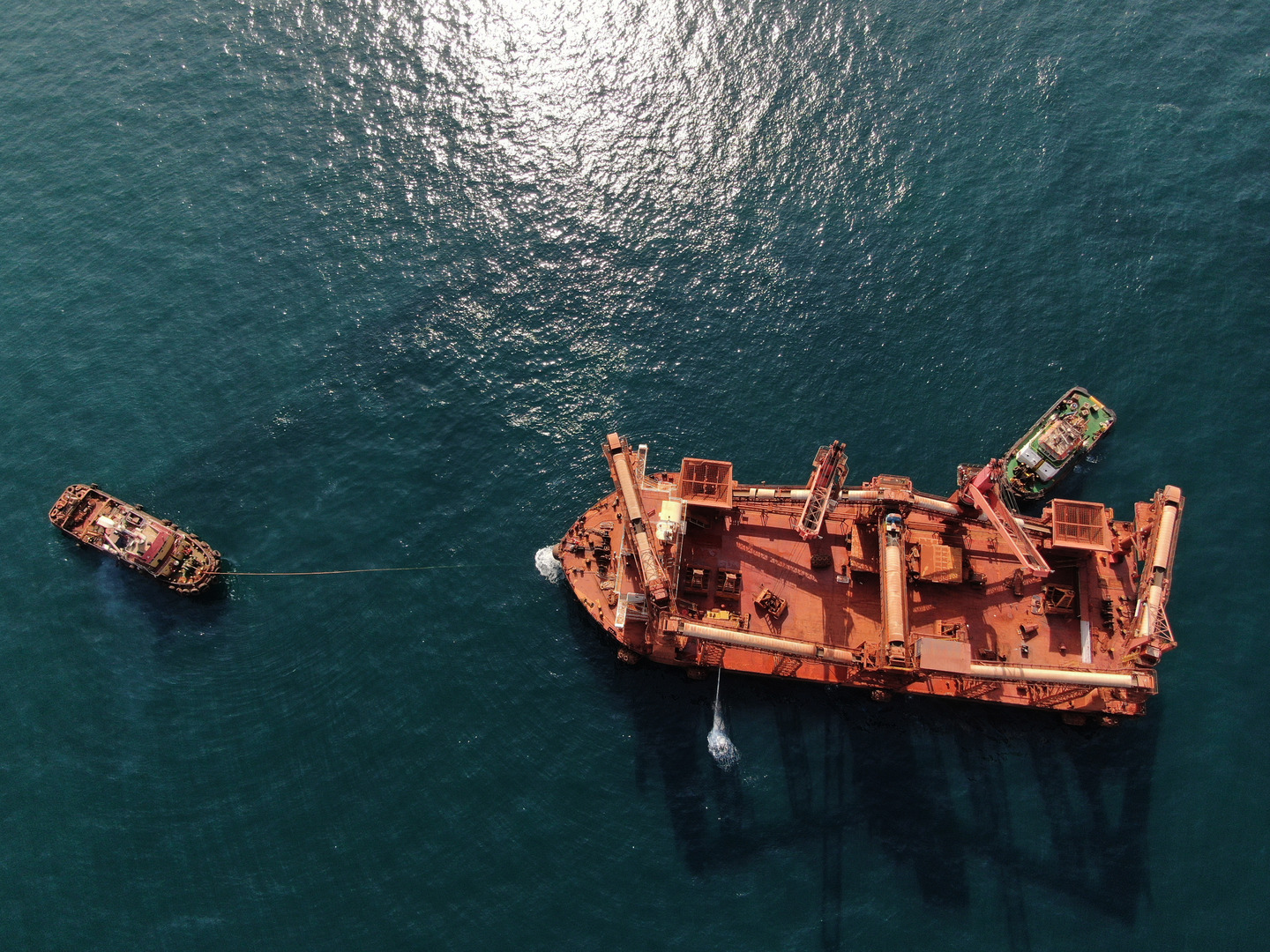Shi.E.L.D. Services takes a modular approach to the design of transshippers
MODULAR DESIGN
Shi.E.L.D. Services has developed the ‘Modular Design’ of transshippers, a modern design approach which features innovative solutions to reduce CAPEX/OPEX costs and to increase safety on board, writes Luca Condini, Technical Director at Shi.E.L.D. Services.
Transshipment is a smart logistics solution which has helped overcome otherwise insurmountable bottlenecks in the movement of dry bulk materials.
But there have been very few changes in transshipment design since its inception in the last 40 years. Transshippers are still based on design solutions which were fit for purpose in the past but now need to be updated to remain competitive in the today’s challenging dry bulk market.
Disrupted supply chains, uncertain government mining and export policies, and volatility in commodities prices mean that there is a demand for solutions which guarantee greater flexibility and cost reduction.
Shi.E.L.D. Services has been working in the transshipment sector for decades and because of the experience it has gained in the field, it has developed a ‘Modular Design’ which addresses the needs for a flexible response and cost reduction improving three main aspects of bulk transshipment:
Flexibility: with a modern design approach which allows the characteristics of the transshipper to adapt to different project scenarios and reduce capital costs;
Efficiency: with innovative equipment which optimizes power management of the vessels and reduces fuel consumption and operating costs; and
Safety: with specific solutions focused on reducing the presence of the crew on deck doperating activities

MODULAR DESIGN CONCEPTS
The traditional approach sees the transshipper designed for a specific set of project requirements and to deliver the optimal performance under specific conditions. Shi.E.L.D. Services’ new approach means that its vessels can operate more efficiently across a wider range of scenarios and conditions, as many projects have fluctuating volumes or the vessel needs to be deployed on other projects.
Shi.E.L.D. Services’ ‘Modular Design’ takes into account the various ways the project might develop and depending on the requirements, it defines the future improvements to be applied to the transshipper.
For instance a simple floating crane would be sufficient for a project in the early stages, because of the limited quantity of cargo to be handled. Should the quantity of cargo increase, one additional crane can be installed. The provisions for the second crane, for the additional generators and for the increased accommodations are already taken into account in the transshipper design and the modifications can be carried out in a shorter period of time and at a lower cost (i.e. during a special survey).
The same principle applies in case a conveyor system is added in order to increase the daily transshipment rate and the annual throughput. The essence of the ‘Modular Design’ is that the performance of the transshipper and its characteristics can be improved in incremental steps and also modified as to give the ship owners and the operators the opportunity to optimize the logistics part of the project and reduce the costs. The design is made in such a way that any additional equipment can be installed without limiting the performances of the transshipper.
One more important concept of the modular design is that the hull is based on a traditional 300/330ft coal barge — very easy to find on the market, even second hand if there is the need to reduce CAPEX. Just to give an idea, the Modular Design can stay in a range of US$7 million (for a floating crane with one crane with loading rate of 20,000 tonnes per day) up to US$12 million (for a conveyor system and two cranes with a loading rate of 55.000 tonnes/day). The Modular Design is engineered to work offshore with two metres of waves and 25 knots of wind.
ENERGY RECOVERY SYSTEM
An innovative element included in Shi.E.L.D. Services’ Modular Design is the Energy Recovery System. Hoisting and lowering heavy loads over continuous cyclical motions happens during transshipment operations, where the cargo is moved by the grab cranes from one ship to another. This process is highly demanding on the power generation system and these cyclical motions generate large and sudden variations in the generator’s load. The cranes absorb energy to lift the grab and emit energy when they lower it. This energy, called ‘reverse power’, has always been considered a burden to be disposed of and has always impacted the design of the power generation system and the choice of the generator sizes.
On a transshipper the operation of the cranes places the heaviest burden on the generators by causing a wide variation in energy demand over large power peaks. Load variations from 30% to 80% of the generator rated power in a cycle that repeats itself every two minutes are not uncommon. Keeping in mind that the generator has the highest efficiency and the lowest fuel consumption when working at about 75% of its rated power, it is easy to see that these big load variations make the generator work outside of its operating sweet spot.
Moreover the generators are not always capable of promptly following the sudden power request from the crane. There is always a lag for the generator to go from a low-load to a high-load condition which causes non-optimal fuel combustion further contributing to higher fuel consumption and carbon deposits inside the engine combustion chambers. The continuous load variations induce an additional stress to the mechanical parts of the generators which could lead to premature breakdowns and which require increased maintenance. The size of the generators is usually chosen based on the load peaks and on the amount of reverse power to be absorbed. This approach leads to oversized generators which have a high purchase price, high maintenance costs and which usually work in a far from optimal operating range.
The energy recovery system introduced in Shi.E.L.D. Services’ Modular Design is an innovative technology which preserves energy to reduce fuel costs and lower emissions while increasing operational safety and reliability of the equipment. During operation, the system captures the electrical energy when the crane slows or lowers the load. This energy, which is usually dissipated as heat using braking resistors, is now stored as kinetic energy and is then recycled and utilized to put power back onto the electrical grid for the next hoist. The design of the system is also modular, allowing flexibility to adapt to the equipment installed on board and to different vessel configurations.
Several benefits are achieved by using the energy recovery system:
- the generator purchase cost is reduced by 40%, compared to the purchase cost of bigger size generators;
- fuel consumption is reduced by 20% thanks to the leveling out of the power peaks and the uniform generator load;
- the generators operating and maintenance costs are reduced by 15% as a result of less stressful usage; v increased reliability of the generators;
- reduced stoppages for maintenance or breakdowns of generators;
- the environmental footprint is reduced; and
- the cos (phi) of the electrical system is almost close to 1.0, t.
The energy recovery system smooths the load, levels out the power peaks of the cranes and provides the generator system a uniform load, improving equipment performance, enabling the generators to run at optimal load, and easing wear and tear. The greatest benefits of the energy recovery system are obtained when the system is installed on a new building vessel when the generators can be appropriately chosen but it is well suited also for retrofit installations.
INCREASED SAFETY

Shi.E.L.D. Services’ ‘Modular Design’ improves the safety of operations on board. During offshore cargo handling operations the transshipper needs to be shifted along the ocean going vessel to reach all holds to be loaded. Depending on the vessel size, the loading plan and the transshipper layout, this operation has to be done several times to completely load a ship. Every time a shifting operation is needed the mooring crew has to reach the winches on the deck and operate the machinery locally,taking care of all mooring procedures such as arrange the ropes in a suitable way, engage the ropes on the winch drum, verify the rope tension. It is a rather hazardous operation which requires skilled crew and strict adherence to safety procedures because it is not unusual for a rope to break and pose a risk of injury to the crew.
In order to reduce the physical presence of the crew at the winches during the shifting operations Shi.E.L.D. Services’ Modular Design features a specific mooring arrangement and newly designed mooring winches which allow the ropes to be engaged on the drums at all times and that can be remotely operated from a distant safe location, like a higher deck for a good visibility of the entire mooring area.
The mooring ropes are connected only once at the beginning of the operations and disconnected when the operations are over. The mooring crew is no longer needed every time a shifting is done because the ropes are always engaged on the winch drum and limiting the human presence in the dangerous snap-back mooring area will improve the safety.
In conclusion, Shi.E.L.D. Services’ Modular Design is the answer to the needs of ship owners and operators to adapt to fast-changing scenarios in the transshipment market and a key component in cost optimization.

